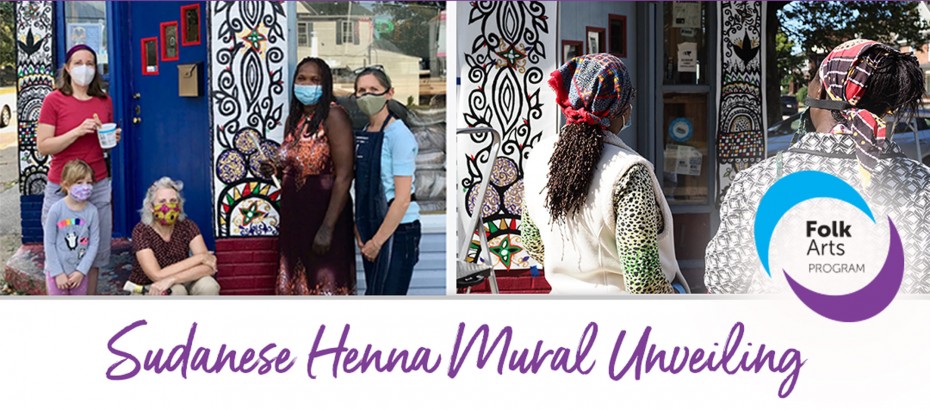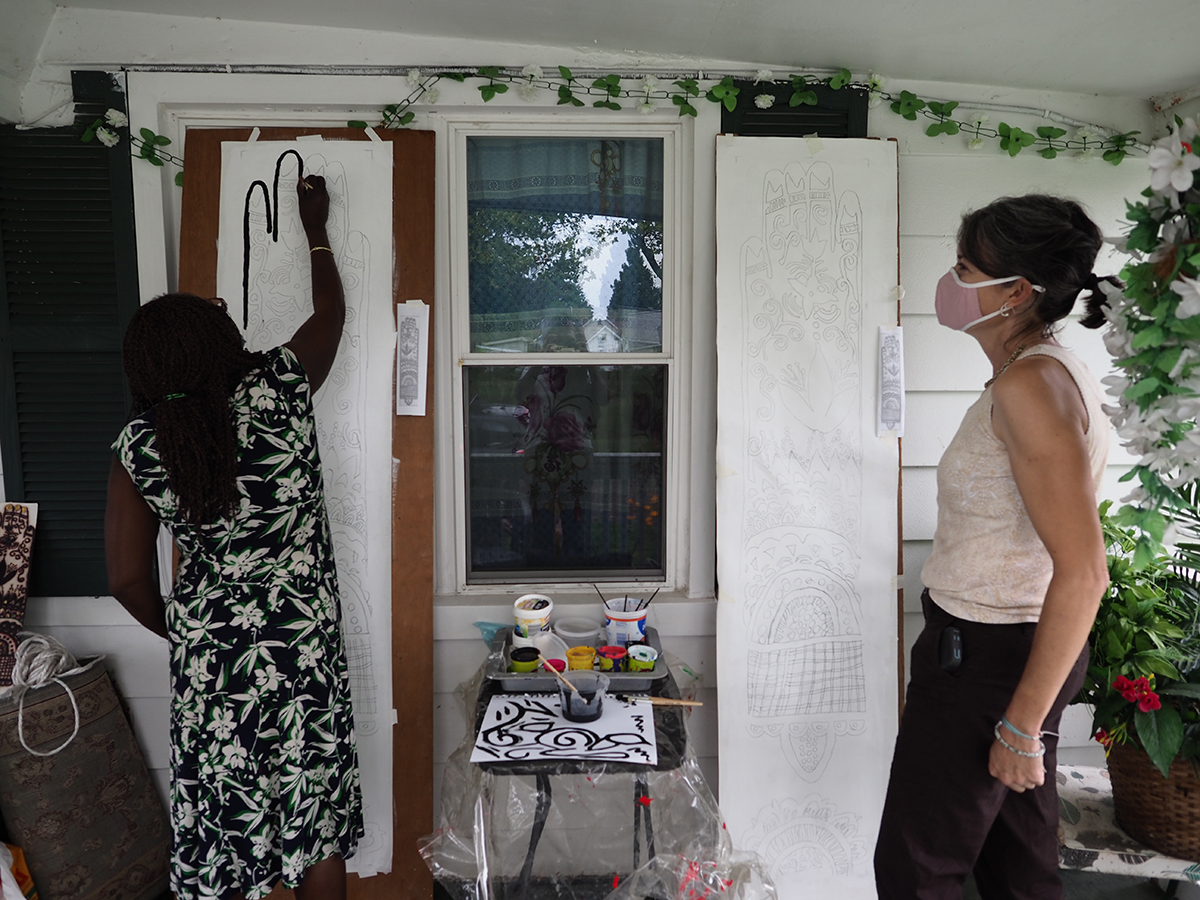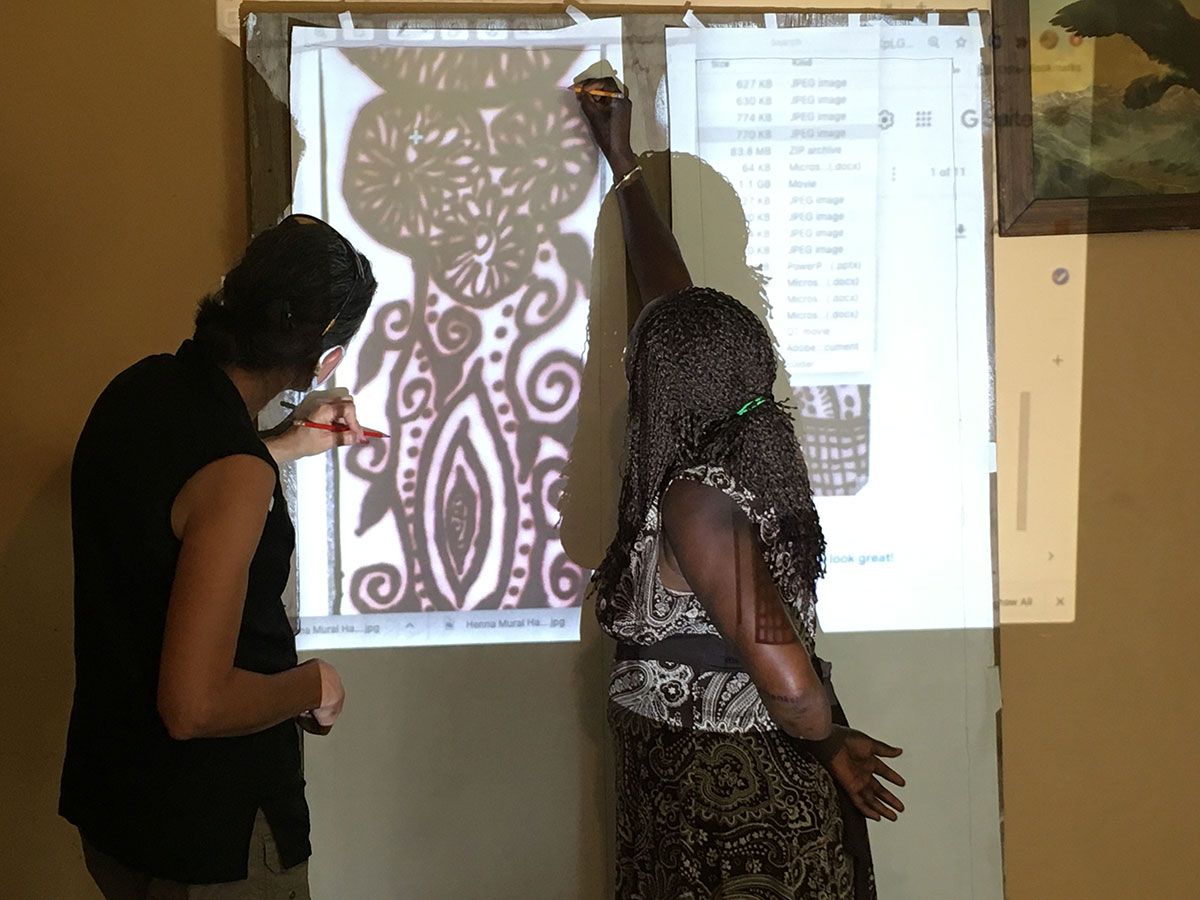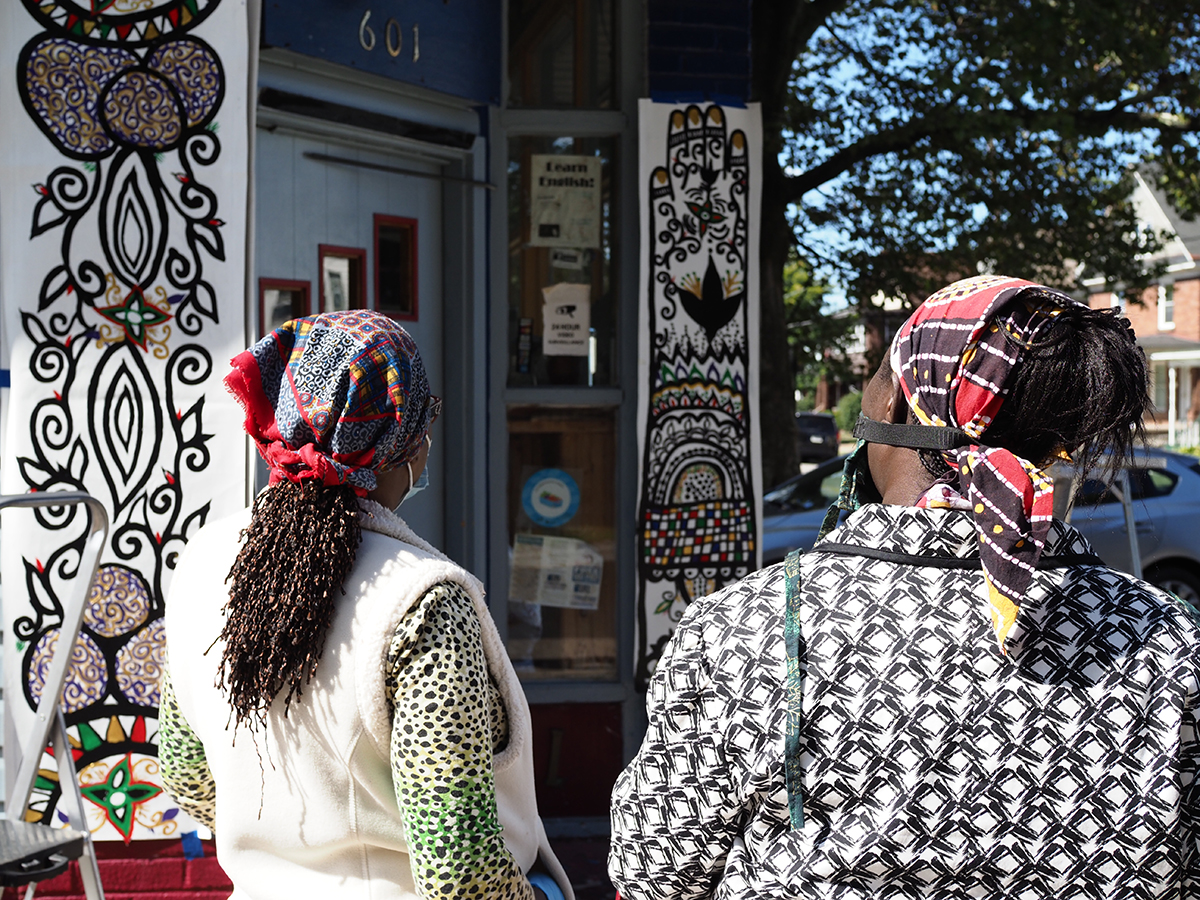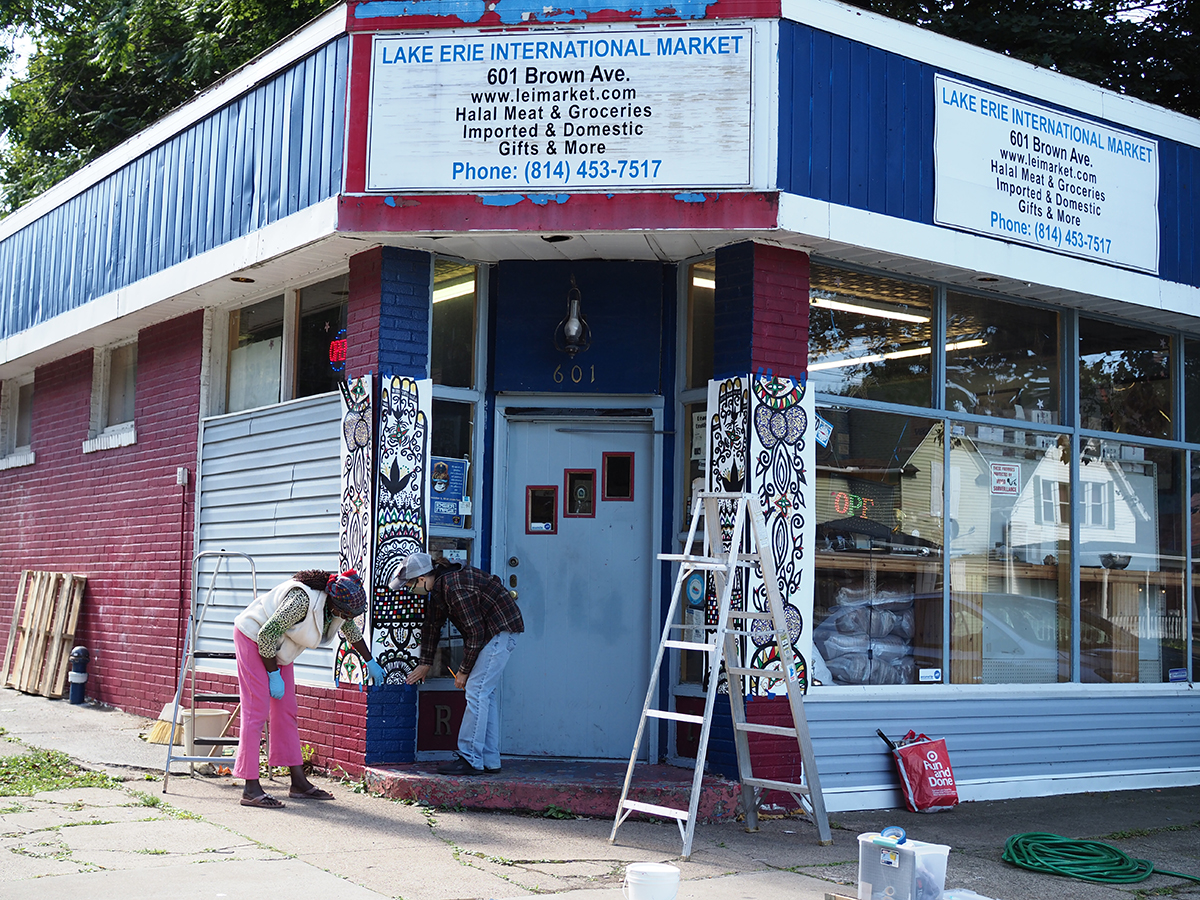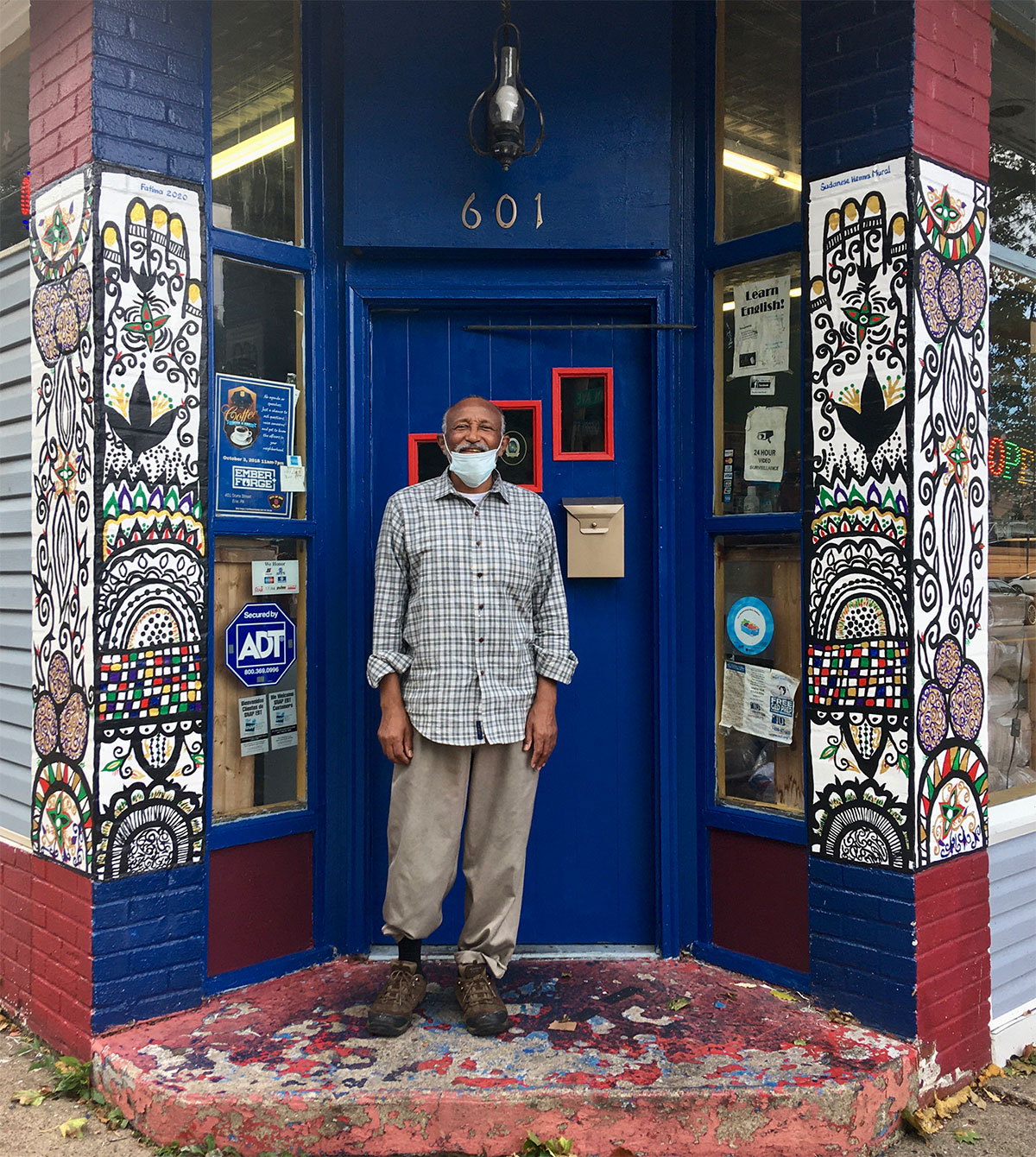Building Decorated with Sudanese Henna Design
Elegant and bold, temporary henna tattoos originate in varied cultures from East Africa, the Middle East, and South Asia. Muslims, Christians, Hindus, and Buddhist women all claim henna as part of their tradition. All these cultures share a proximity to the Indian Ocean, which presents the right conditions to grow the henna plant.
They also share the importance of large, traditional wedding ceremonies, where henna is used as a rite of passage. Elaborate henna designs adorn a bride’s arms, hands, legs, and feet for her wedding night. Once married, women use henna to mark special occasions.
Nialwak Athow is a henna artist who has lived in Erie since 2002. In 2018, the Pennsylvania Council on the Arts (PCA) recognized her as a master practitioner of henna. She says, “For the Sudanese, we always have big weddings. It is very, very important. A bride without henna is like a bride without a beautiful dress. It is as important as the wedding ring. Henna makes the bride feel beautiful and loved. When I do henna for a bride I am giving her a blessing. Henna is our way to show respect for a special day.”
Nialwak also explains how henna signifies both esteem and joy. “When I went back to visit Africa, in my old village, all the women have henna because they celebrate my visit. I get calls from women in Erie who want henna for Mother’s Day, Eid, or Christmas. I also do lots of wedding parties for Somali and Iraqi ladies in Erie. I will do teenage girls' hands, not feet. They like it for prom.”
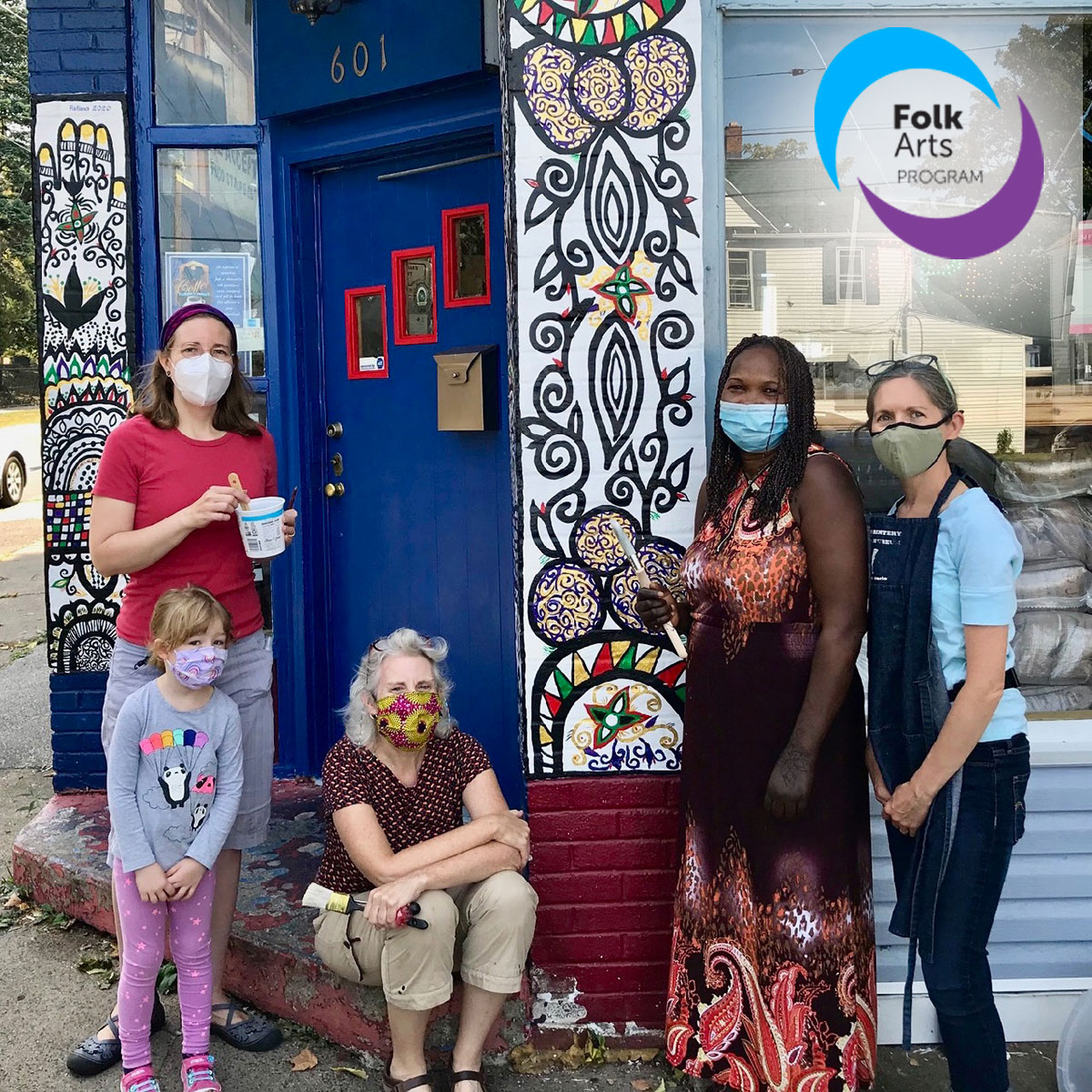
One can see henna year-round on hands and sandalled feet in more temperate climates. Nialwak has had to adapt her practice in Erie, especially during colder seasons. This is exactly the kind of capacity building that Erie Arts & Culture is addressing through a grant provided by the Doris Duke Foundation for Islamic Art. The grant has funded Muslim artists to work with journalism and film students at McDowell High School, create videos to celebrate World Refugee Day, and present their art forms at the virtual Erie Blues & Jazz Festival. As part of this initiative, Erie Arts & Culture also identified an opportunity to encourage New American artists to participate in placemaking initiatives occurring throughout Erie’s urban core. Erie Arts & Culture worked with New American artists to develop projects that improve the exterior facades of ethnic markets located within the City of Erie. This project also supports the City of Erie’s efforts to become a certified Welcoming City through Welcoming America, a national organization that provides the roadmap and support for cities to become more inclusive toward immigrants and all residents.
Using henna inspired designs, Nialwak painted a mural around the doorway of the Lake Erie International Market. An all-female team of artists who recently created the mural on 7th and State Street celebrating women’s right to vote provided guidance and instruction to Nialwak.
Kelly Armor, EAC’s Director of Folk & Traditional Arts, explains, “This was a huge step for Nialwak. She is a traditional artist, who learned bead work and henna informally through her community. She has never painted or created public art, but she threw herself into the process. She was undaunted. She watched her mentors very closely, yet remained very decisive about her artistic decisions.”
Jennifer Peters, an art teacher at Fort LeBouef Middle School, was Nialwak’s chief mentor. Jennifer states, “This was an amazing opportunity to assist and celebrate a New American woman artist while creating public art in our home of Erie. I hope when other women artists see her mural, they too feel empowered and part of a real collective. We are here to support one another.” Nialwak created the design and Jennifer helped her scale it up, paint it, and affix it to the building with additional help from artists and art educators Kathy Johnson, Barbara Wegner, and Mary Elizabeth Meier.
Sheikh Abdalla, a local Imam and immigrant from Sudan, owns the market. He is very supportive. “My store helps people keep their culture with ethnic food. So I was excited when Nialwak first asked me. It is beautiful.” The Sheikh and Nialwak both agreed that seating was a priority. Local woodworker Armando Reyes, proprietor of Lake Erie Woodworks and Lake Erie Drumworks, created a wooden bench that also served as a canvas for Nialwak’s designs.
Nialwak is pleased how this placemaking project communicates her bold African style. “Henna, to us, means happiness. We love henna. It is good to show our culture on a building!” The market is located at the corner of Brown Avenue and Cherry Street in the City of Erie.

